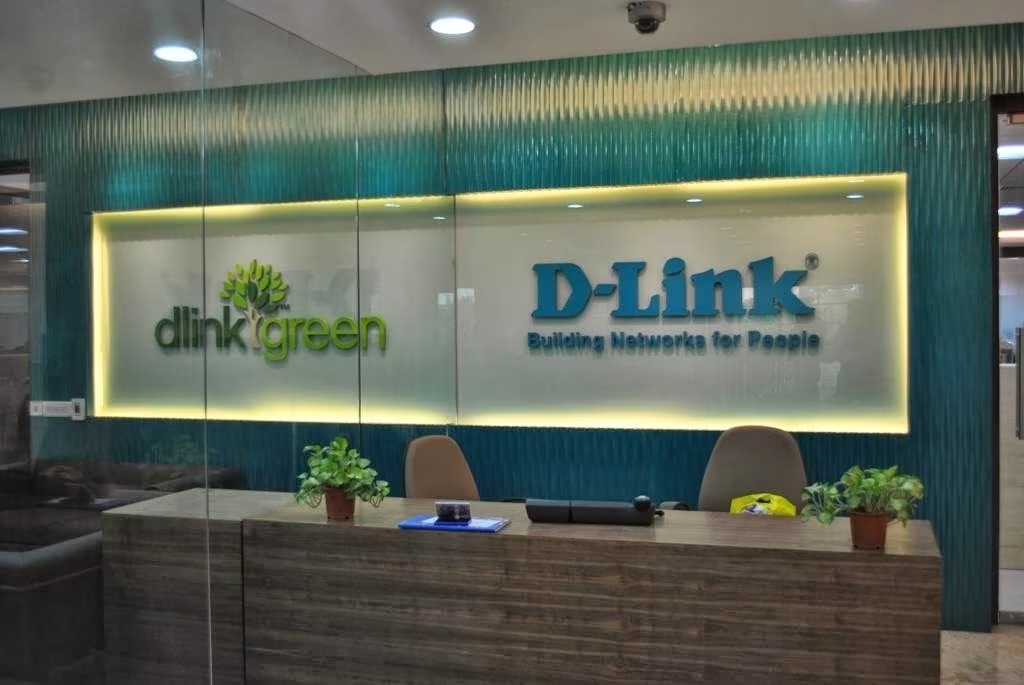1. At a Glance
D-Link India Ltd — the company that brings Wi-Fi to every Indian home, office, and maybe even your neighbor’s house — just dropped its Q2FY26 results like a freshly rebooted router. The numbers? Pretty strong signal, but with slight packet loss.
Revenue for Q2FY26 stood at₹377 crore, up11.8% YoY, while profit after tax clocked in at₹25.4 crore, slightly down by5.01% YoY. TheEPSfor the quarter came in at₹7.15, translating to an annualized EPS of ₹28.6. That means at a current market price of ₹446, you’re staring at a P/E of about15.3x, cheaper than your 5G plan per gigabyte.
Oh, and here’s the cherry on the Ethernet cable — D-Link declared aninterim dividend of ₹6 per share(on a ₹2 FV), with arecord date of November 14, 2025. That’s a4.49% dividend yield, which is more generous than most Indian telecom speeds during peak hours.
The company’s market cap stands at₹1,582 crore, ROE at21.3%, and ROCE at a beefy28.3%. And get this —zero pledges,debt-to-equity ratio of just 0.02, and acurrent ratio of 2.5. Basically, D-Link is debt-free and cash-happy, a rare Wi-Fi signal in the land of leveraged networks.
But wait, there’s more drama —Chairman Mukesh Lulla just resigned, right after declaring that dividend. Coincidence or timing worthy of a season finale? You decide.
2. Introduction – The Network Whisperer
If routers had emotions, D-Link would be the therapist. The company has spent decades connecting millions — not emotionally, but via Ethernet cables and Wi-Fi extenders.
Born as a distributor and now ruling as India’s networking monarch,D-Link (India) Ltdhas turned simple modems into money machines. It’s the company that sits between your internet dreams and your buffering nightmares. With amarket share of 30% in switchesand40% in wireless LAN products, D-Link doesn’t just move data — it moves India.
The stock, however, seems to have caught a weak signal lately. In the past one year, it’sdown 21%, proving once again that even tech companies can experience “network issues.” Over three years, though, it’sup 19%, and over five years,up 34%— slow but stable, like your home Wi-Fi after a good restart.
But D-Link isn’t just sitting idle, counting routers. It’s been expanding its product base withAI-driven mesh systems,enterprise-grade switches, andsmart surveillance setups. It even ownsTeamF1 Networks Pvt Ltd, which makes software that helps routers behave more intelligently — something most humans could use.
So, how does a company that’s everywhere (except when your Wi-Fi drops) stack up financially? Let’s connect the dots.
3. Business Model – WTF Do They Even Do?
D-Link (India) Ltd doesn’t manufacture — itmarkets, distributes, and services. Think of it as the Flipkart of networking gear. You don’t see them soldering circuit boards; they’re too busy selling those boards to everyone else.
Their portfolio covers every networking need:
- Routers and Modemsfor homes that run on Netflix and prayer.
- Switches and Structured Cablingfor enterprises that think Wi-Fi is for interns.
- Surveillance Systemsfor offices that trust no one.
- Network Security and AI Mesh Solutionsfor the paranoid millennial generation.
The company operates through two main verticals:
- Consumer Solutions– Wi-Fi routers, range extenders, and AI Mesh systems under theEAGLE PRO AI series.
- Enterprise Solutions– Managed switches, cabling infrastructure, and surveillance systems tailored for government, education, BFSI, and hospitality.
Distribution is D-Link’s secret sauce. It’s got3 national distributors,100+ business distributors, and a mammoth15,000+ resellers. Warehouses inGoa, Mumbai,
Bangalore, and Delhiact like regional command centers.
And then there’s theTeamF1 Networkssubsidiary — their in-house tech brain that builds software for Wi-Fi management and network security. Think of it as the Gandalf of routers — “You shall not lag.”
4. Financials Overview
| Metric (₹ Cr) | Latest Qtr (Sep’25) | YoY Qtr (Sep’24) | Prev Qtr (Jun’25) | YoY % | QoQ % |
|---|---|---|---|---|---|
| Revenue | 377 | 337 | 350 | +11.8% | +7.7% |
| EBITDA | 33 | 33 | 29 | 0% | +13.8% |
| PAT | 25 | 27 | 24 | -5.0% | +4.2% |
| EPS (₹) | 7.15 | 7.53 | 6.87 | -5.0% | +4.1% |
Annualized EPS = ₹28.6 → P/E = 15.3x (CMP ₹446)
Commentary:Revenue grew, margins held up, but profits slipped a bit — maybe the routers were busy buffering. Operating margins hovered around9%, which isn’t bad for a distribution business that runs on wafer-thin margins. The company’sasset-light modelmeans that even small upticks in sales can boost ROE big time.
5. Valuation Discussion – The Fair Value Wi-Fi Zone
Let’s connect some valuation dots, shall we?
a) P/E Method
- Annualized EPS: ₹28.6
- Industry P/E: ~24.5x
- D-Link’s Current P/E: 15.3x
- Fair Range = ₹28.6 × (15x – 22x) =₹430 – ₹630
b) EV/EBITDA Method
- EV = ₹1,538 Cr
- EBITDA (TTM) = ₹128 Cr
- EV/EBITDA = 12x
- Industry range (10x–15x) → Fair EV = ₹1,280–₹1,920 Cr
- Adjusting for debt and cash →Fair Equity Value = ₹440 – ₹660/share
c) Simplified DCF EstimateAssume FCF ₹70 Cr growing at 6%, discount rate 12% →Value ≈ ₹1,167 Cr / 3.55 Cr shares =₹330/share base case, up to₹550/shareoptimistic.
Fair Value Range: ₹430 – ₹630/share(For educational purposes only, not investment advice.)
6. What’s Cooking – News, Triggers, Drama
The Wi-Fi giant didn’t just drop a quarterly result; it dropped aplot twist.
- Interim Dividend:₹6 per share, record dateNov 14, 2025. That’s D-Link’s way of saying, “Your connection is stable, have some cash.”
- Leadership Shuffle:Long-time chairmanMukesh Lullaresigned, right after the dividend announcement. Either he’s going out with a smile,

















